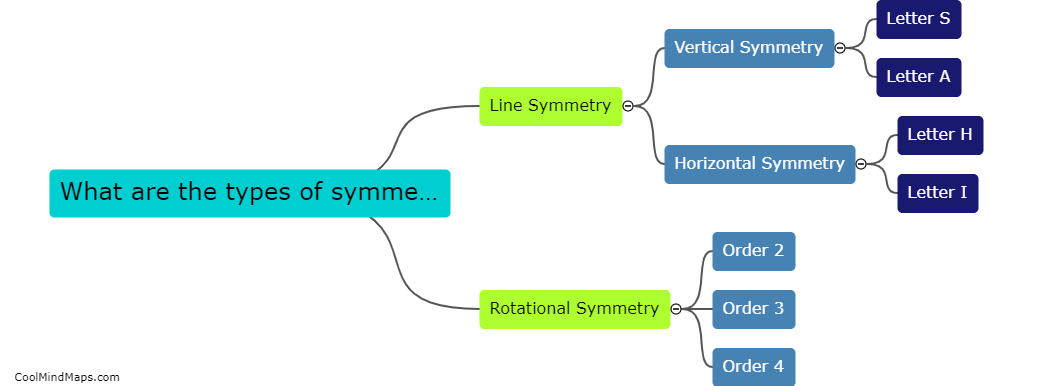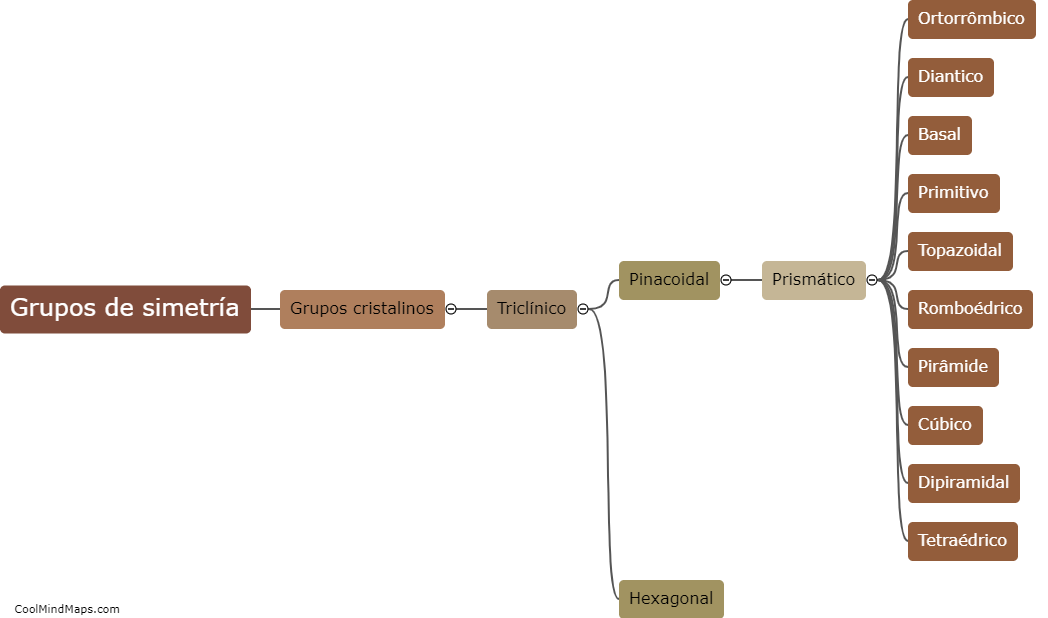What are the types of symmetry?
Symmetry is a fundamental concept in mathematics and is categorized into various types such as reflective, rotational, translational, and glide symmetry. Reflective symmetry, also known as mirror symmetry, occurs when an object can be divided into two equal parts that mirror each other. Rotational symmetry involves an object being rotated around a central point and looking the same at different angles. Translational symmetry occurs when an object can be moved along a straight line and remains unchanged. Lastly, glide symmetry combines both reflection and translation, where an object can be reflected and then translated in a parallel direction to create a repeating pattern. Understanding these types of symmetry is crucial in various fields such as art, design, and science.

This mind map was published on 27 September 2024 and has been viewed 138 times.











